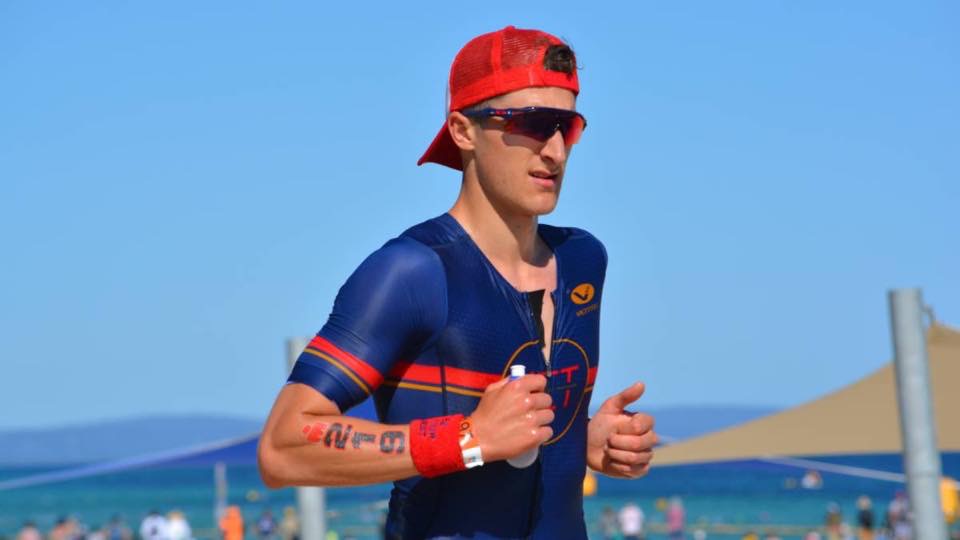Throughout post season and prep phase, triathletes have a great opportunity to seek diversity with their training.
Away from straight line running, hours of pedalling and turning heads every two strokes, we can teach our bodies new skills, new movement patterns and create new habits in order to become more resilient and well-rounded as athletes and human beings.
One part of this diversity could be strength training, which may provide the obvious physical adaptations, but could also improve broader aspects of health.
Strength training can involve lots of different equipment, or none at all! For endurance athletes, it can be difficult to decipher why and how we should integrate strength training into our lives. Yes, this is where an experienced coach comes in handy. But, to help prepare you for these conversations with your coach or mentor, here’s some handy info you should know.
Strength training encourages us to ‘recruit’ more muscle fibres. Most endurance exercise is performed at low intensities, so it takes a lot less effort and significantly fewer muscle fibres to push the pedals than it does to perform a weighted squat. In doing so, we are teaching our muscles to produce more force voluntarily.
During recovery from strength training our muscles respond on a metabolic level by increasing their size, increasing voluntary availability and improving peak power capabilites. For the sake of this blog consider this: typical endurance athlete contains lots of ‘Type 1’ or ‘Slow-twitch’ muscle fibres which are great for repetitive, aerobic exercise. However, when asked to produce lots of force or lift a heavy weight, they struggle.
A typical gym-goer contains lots of ‘Type 2’ or ‘Fast-twitch’ muscle fibres which contract quickly, with lots of force during anaerobic movements like power lifting and sprinting. However, when asked to perform long bouts of exercise, these fibres fatigue easily. Herein lies the benefit of strength training for endurance athletes; by increasing the amount of force our type 1 muscle fibres can produce voluntarily, theoretically we can perform at higher intensities, push greater power through the pedals, propel forwards further and faster whilst swimming and running, for longer without fatigue. In simple terms, the efficiency or bang for your buck from each muscle contraction is improved and can be applied to swim, bike and run.
This all sounds great, but should we just go ahead and start squatting 100kgs under a bar? Probably not. In fact, please don’t! Our bodies are not accustomed to this type of exercise so it can take a bit of time to get used to. Starting with body weight to learn balance, stability and form. Then can we start to add resistance by using, weights, bands or machines.
Strength training can also be applied in a sport specific context like sprinting, hill running, low cadence efforts on the bike or paddle work in the pool. This type of training can be just as valuable and might be employed strategically to wean off pure lifting as we approach the season or to maintain strength during the racing calendar.
It’s important to remember that whilst training is fun and makes us feel great about ourselves, it’s not lifting the weights that makes us stronger, it’s the recovery afterwards where muscle is repaired, and new proteins formed. This occurs mainly during sleep, but there is also an active component to this with techniques such as stretching, compression, massage, nutrition and hydration. Each of which has a right time and place however, all can be employed to help us increase our strength, efficiency and quality of movement.
Strength training can improve muscle mass, force production and endurance. But is also increases our metabolic rate well above what endurance exercise does for similar amounts. This is also achieved through the upregulation of important hormones and neurotransmitters post-workout. This helps to improve body composition, insulin sensitivity, cardiovascular health, cholesterol levels, mood, energy levels and bone density. All which help to prevent injury and improve performance from an athletic and career standpoint. Strong quads are great for better power on the bike, but improved mood and energy can do wonders for daily productivity in the office.
A quick google search “strength training for triathletes” brings thousands of results, including free strength programs, exercises tips and ideas.
How can we find the right information about strength training amongst a sea of material?
Firstly, this information is not personalised or always suitable for individual needs; this is why an exercise physiologist, physiotherapist, strength and conditioning coach or triathlon coach is best to consult. Our most reputable resource are academic journals, google scholar or PubMed. But for easy reading and listening here’s a few resources to get you started:
https://www.purplepatchfitness.com/podcast-transfer/tag/Functional+Strength
https://www.fitter.co.nz/fitter-radio/2019/7/21/episode-273-tim-don
Words by Ryley Pasquali
